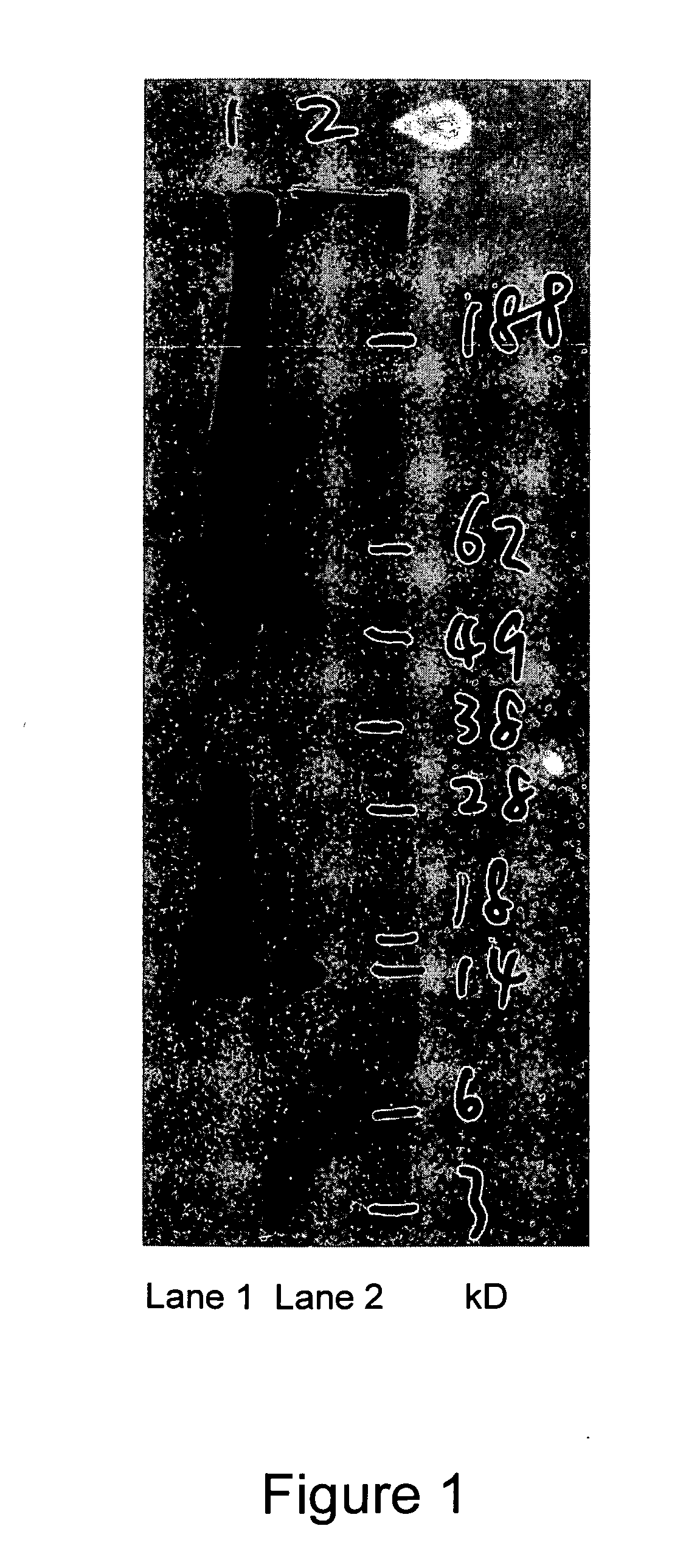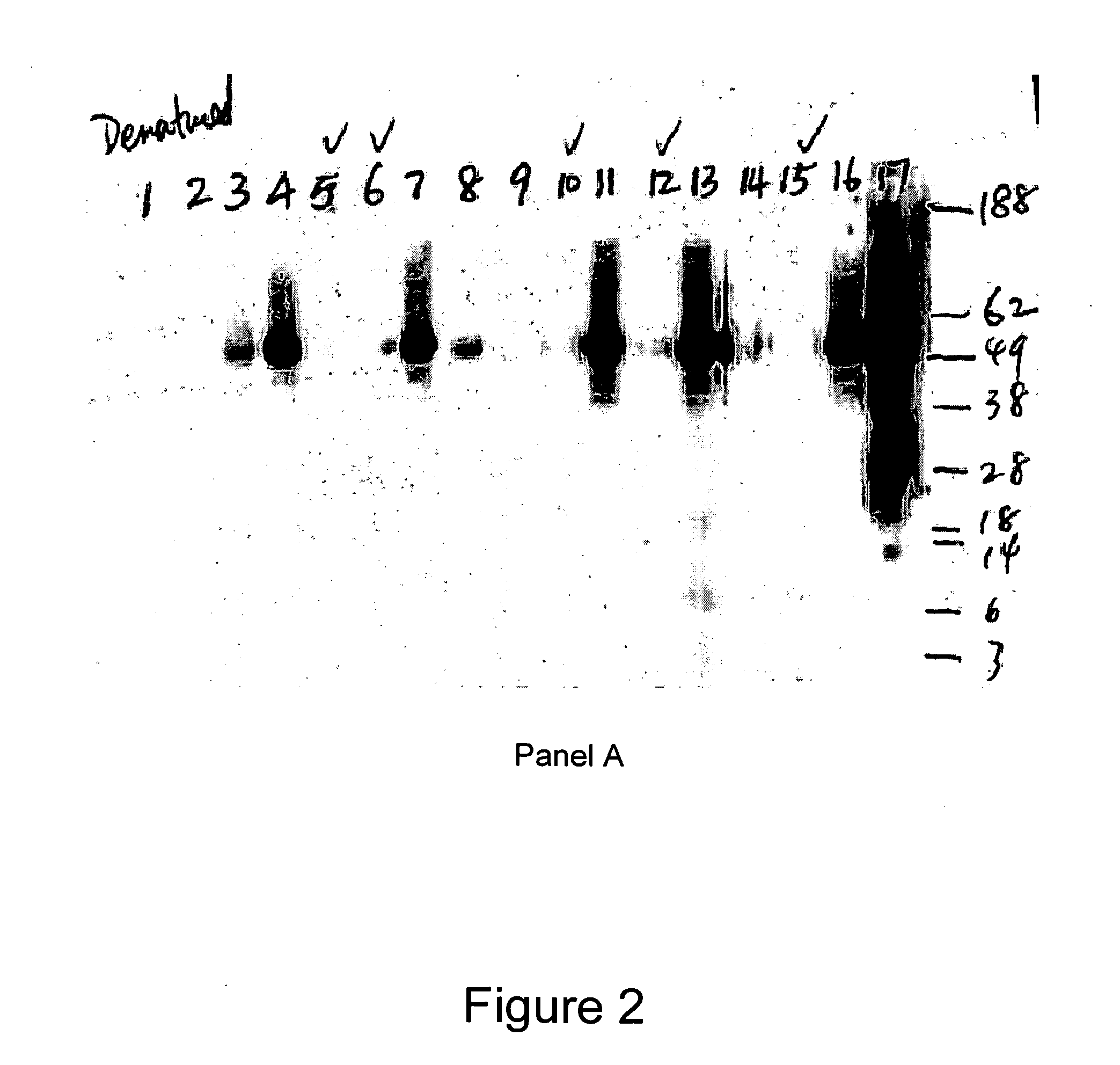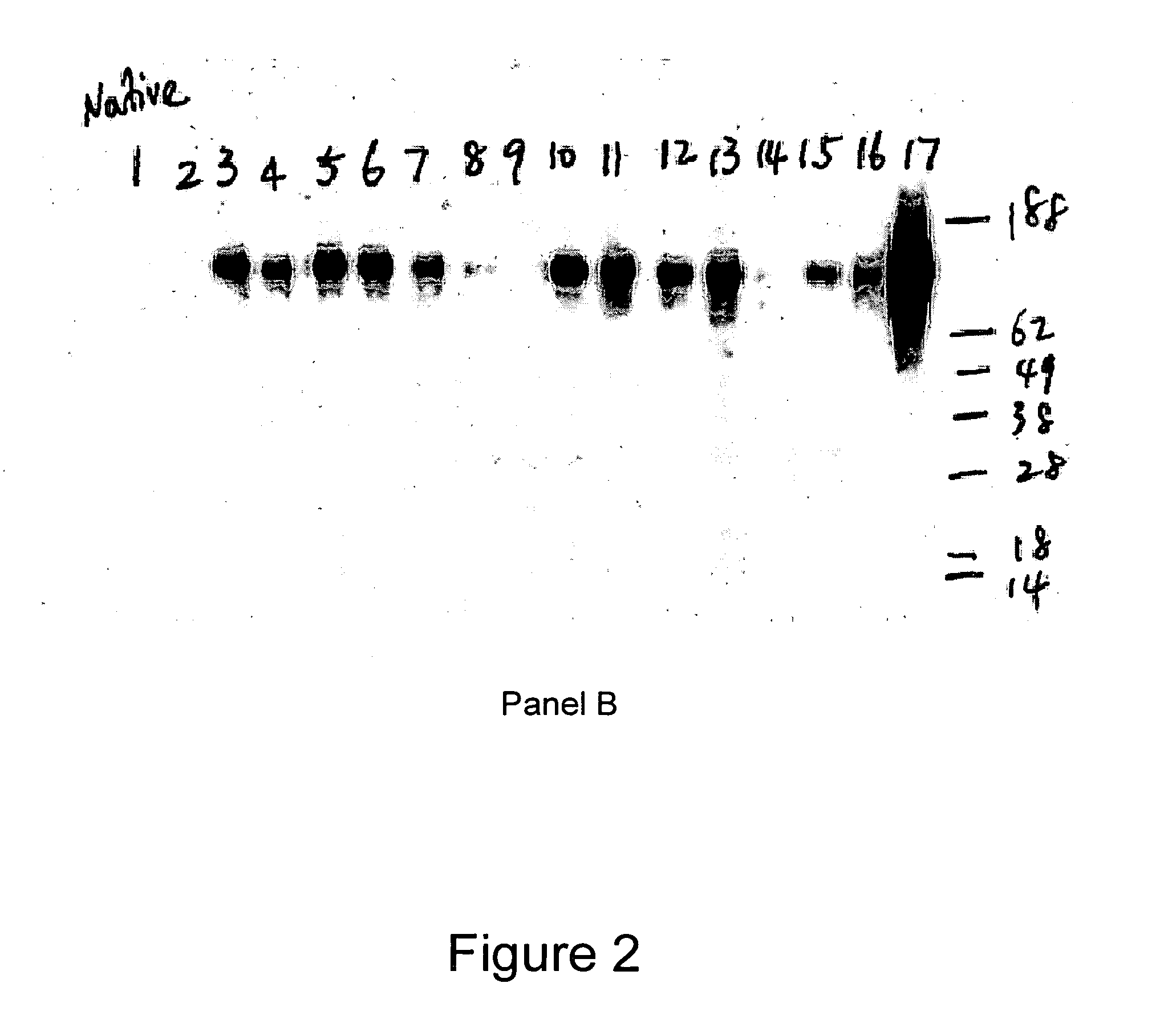Native immunoglobulin binding reagents and methods for making and using same
- Summary
- Abstract
- Description
- Claims
- Application Information
AI Technical Summary
Benefits of technology
Problems solved by technology
Method used
Image
Examples
example 1
[0128] Production of Antibody
Immunization and Fusion Methods
[0129] Lou / M rats were immunized with mouse serum immunoglobulin. Balb / c mice were immunized with rabbit serum immunoglobulin. Sera titer were tested after three immunizations. Spleens from animals with high serum titer were fused with a mouse myeloma fusion partner, SP2 / O.
[0130] Fusion Protocol
[0131] A. Media Preparation
[0132] 1) IMDM basic medium:
[0133] 2) 20% FBS Complete medium: [0134] 500 ml IMDM basic medium+100 ml FBS+6.5 ml P / S (stock solution concentration: 10,000 units / ml penicillin; 100,000 units / ml streptomycin)+6.5 ml glutamine (stock solution concentration: 200 μM).
[0135] 3) Supplements: [0136] 100× HAT [0137] 50× HES (Hybridoma Enhancing Supplement)
[0138] 4) Fusion medium: [0139] 500 ml complete medium [0140] 5 ml 100× HAT [0141] 10 ml 50× HES
[0142] 5) 50% PEG (Sigma, MW 1500)
[0143] B. Preparation of the Myeloma Cells
[0144] 1) Prior to the fusion, the myeloma cell line was cultured in at least 10-...
example 2
Subtractive Immunization to Prepare Polyclonal Anti-NIGSAB
[0238] Procedure:
[0239] Day 1: Inject 6 mice (i.p.) with tolerogens (denatured immunoglobulin) which are not desired for the final antibody production (25-50 mg) using complete adjuvant. Ten minutes later inject 100 mg / kg body weight of cyclophosphamide (SIGMA) in sterile phosphate buffered saline. Make a 2 mg / ml of cyclophosphamide solution for this purpose.
[0240] Day 2: Inject the cyclophosphamide again (100 mg / kg body weight).
[0241] Day 3: Repeat injection of cyclophosphamide.
[0242] Day 7: Bleed mice and do an antibody titer via ELISA.
[0243] Day 14: Inject 6 mice (i.p.) with tolerogen (25-50 mg) which are not desired for final antibody production using incomplete adjuvant. Ten minutes later inject 100 mg / kg body weight of cyclophosphamide in sterile phosphate buffered saline.
[0244] Day 15: Inject the cyclophosphamide again (100 mg / kg body weight).
[0245] Day 16: Repeat injection of cyclophosphamide.
[0246] Day 21: ...
example 3
Cloning and Expression of Anti-NIGSAB in Mammalian Cells
[0251] A typical mammalian expression vector contains at least one promoter element, which mediates the initiation of transcription of mRNA, the antibody coding sequence, and signals required for the termination of transcription and polyadenylation of the transcript. Additional elements include enhancers, Kozak sequences and intervening sequences flanked by donor and acceptor sites for RNA splicing. Highly efficient transcription can be achieved with the early and late promoters from SV40, the long terminal repeats (LTRS) from Retroviruses, e.g., RSV, HTLVI, HIVI and the early promoter of the cytomegalovirus (CMV). However, cellular elements can also be used (e.g., the human actin promoter). Suitable expression vectors for use in practicing the present invention include, for example, vectors such as pIRES1neo, pRetro-Off, pRetro-On, PLXSN, or pLNCX (Clonetech Labs, Palo Alto, Calif.), pcDNA3.1 (±), pcDNA / Zeo (±) or pcDNA3.1 / H...
PUM
| Property | Measurement | Unit |
|---|---|---|
| Fluorescence | aaaaa | aaaaa |
| Chemiluminescence | aaaaa | aaaaa |
Abstract
Description
Claims
Application Information
 Login to View More
Login to View More - R&D
- Intellectual Property
- Life Sciences
- Materials
- Tech Scout
- Unparalleled Data Quality
- Higher Quality Content
- 60% Fewer Hallucinations
Browse by: Latest US Patents, China's latest patents, Technical Efficacy Thesaurus, Application Domain, Technology Topic, Popular Technical Reports.
© 2025 PatSnap. All rights reserved.Legal|Privacy policy|Modern Slavery Act Transparency Statement|Sitemap|About US| Contact US: help@patsnap.com



